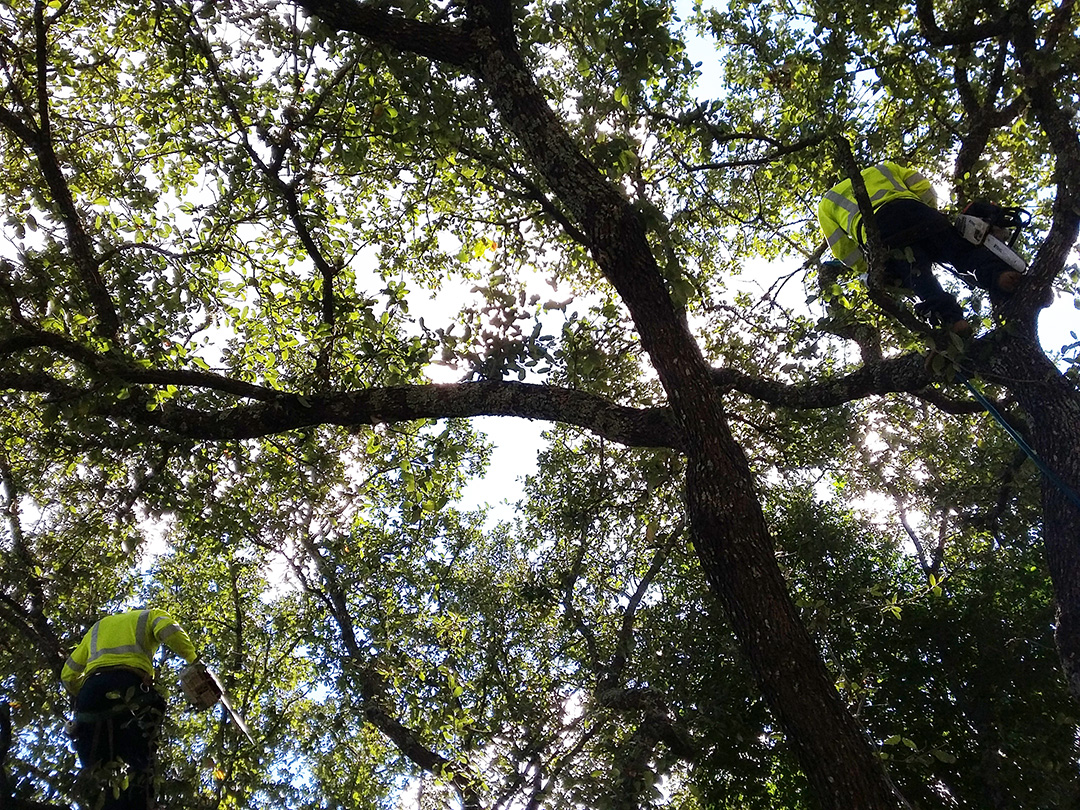As the leaves start to fall in Texas, you may notice ball moss in your oak trees and mistletoe on trees such as mesquites, cedar elms and hackberries. While ball moss is less of a threat to your trees, mistletoe can be extremely harmful, and if you’re like most homeowners, you’d rather just have both removed. After all, mistletoe and ball moss removal can be essential to the aesthetics of your landscape.
When Tree Parasites Turn into Tree Problems
Mistletoe
Mistletoe is one of many tree parasites, often robbing your trees of water and nutrients, causing quite a bit of damage in the process. Its root system lives in the wood of the tree but it can also cause weakness to the branch which its attached to over time. Its presence rarely leads to death, but it has the power to expedite a tree’s decline if that tree is already stressed by other factors. Tree professionals highly recommend removal of mistletoe on trees for the sake of the beauty and health of your tree.
Removing Mistletoe
When you’re experiencing tree problems due to mistletoe infestation, a tree professional can remove the “pod” from your branches. Because mistletoe that grows on the trunk and larger limbs can only be scraped off, it’s likely to return and will have to be scraped again (called managing). Keeping the number of pods limited with the help of a tree company, will demand less energy from the tree during the process.
Ball Moss
Despite its name, ball moss is not exactly a moss, but rather, an epiphyte or air plant, with exposed roots. Unlike mistletoe, it’s not one of the many tree parasites. While some believe it’s not harmful to trees, the fact is, in large quantities, ball moss can have a negative impact because it shades out young leaves and buds. As it increases in surface area, it can cause tree problems like breakage of limbs.
Ball Moss Removal
Since ball moss is not one of the tree parasites, it only has to be removed once. However, when the conditions are right (i.e. low airflow, high humidity), more may grow back. You have two options when it comes to ball moss removal: remove it manually or spray it with chemicals.
- Manual removal is the superior technique, but more expensive. Not only is it more thorough, it can address pruning needs and avoid the side effects of chemical use. Be sure to use a reputable company because unskilled climbers may remove too much foliage or damage tree bark in the process.
- Spraying with one of three chemicals: Baking soda, copper hydroxide or potassium bicarb. Aside from potentially harming other parts of the tree with their use, none of these chemicals will kill more than about 70 percent of the moss, until it finally rots off years later.
Whenever you’re dealing with tree problems due to ball moss or tree parasites like mistletoe, it’s always recommended to let a tree professional access the situation first, then take any necessary action. Your trees are an important part of your home’s value, and any measures to correct damage or improve aesthetics should be handled with care and expertise.

